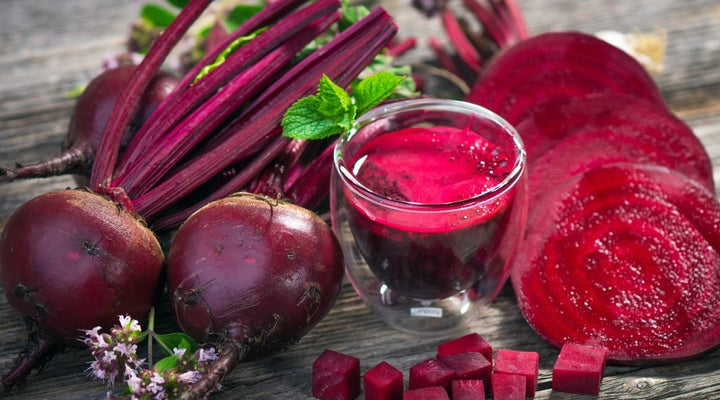
Innovative Ways to Reduce Coffee Acidity
Coffee enthusiasts often extol the virtues of their favorite brew, praising its rich aroma, robust flavor, and the energizing kick it provides. Yet, one aspect of coffee that doesn't always get its due attention is its acidity. Far from being a mere footnote in the coffee experience, the acidity of coffee plays a pivotal role, not just in shaping its taste profile but also in influencing how it interacts with our body.
When we talk about coffee's acidity, we're referring to its bright, sharp notes that can range from a subtle tanginess to a pronounced sharpness. This acidity is often a sought-after quality, especially in specialty coffees, where it can add a level of sophistication and depth to the flavor. However, it's not just about taste. The acidic properties of coffee can also have a significant impact on digestive health, particularly for those sensitive to acidic foods and beverages.
The Importance of pH in Coffee
The concept of pH is central to understanding the acidity in coffee. The pH scale, which ranges from 0 (highly acidic) to 14 (highly basic or alkaline), serves as a measure of the acidity or basicity of a substance. Water, which is neutral, has a pH of 7.0. Most coffee varieties register a pH value between 4.85 to 5.10. This places coffee in the acidic category, though it's less acidic than substances like lemon juice or vinegar.
Why does this matter? The pH level of your cup of joe can influence everything from its taste to how it affects your stomach. A lower pH means higher acidity, which can contribute to that bright, vibrant flavor many loves in their coffee. However, it can also lead to increased stomach acidity, which might be troublesome for some individuals.
Identifying the Culprits: What Makes Coffee Acidic?
Natural Acids in Coffee

The distinct flavor of coffee is largely due to its natural acids. These include chlorogenic acid, which contributes to the coffee's bitterness and antioxidant properties; citric acid, adding a touch of fruitiness; and quinic acid, which offers a slightly astringent quality. These acids, among others, form during the coffee bean's growth and development and play a critical role in defining the characteristic taste of coffee.
How Roasting Affects Acidity
Roasting is a transformative process for coffee beans. It doesn't just darken the beans and develop their flavor; it also impacts their acidity. Generally, darker roasts tend to have less acidity compared to lighter roasts. This is because prolonged exposure to high temperatures during roasting breaks down the chlorogenic acids. So, a dark roast will have a smoother, less tangy flavor profile than a light roast, which retains more of the bean's natural acidity.
The Impact of Brewing Methods

Finally, the way you brew your coffee can also influence its acidity. The temperature and duration of brewing play critical roles here. For instance, cold brewing, which involves steeping coffee grounds in cold water for an extended period, typically results in a coffee that is smoother and less acidic. This is because the cold water extracts fewer acids than hot water. In contrast, a quick, hot brew can extract more of these acidic compounds, leading to a sharper taste. This variance in brewing techniques allows coffee drinkers to tailor their brewing method to suit their taste preferences and sensitivity to acidity.
Health Implications of Acidic Coffee
Acid Reflux and Heartburn
One of the health issues associated with coffee is its potential to worsen gastroesophageal reflux disease (GERD) and cause heartburn. GERD is a long-term condition in which stomach acid frequently flows back into the esophagus causing irritation. Normally there is a ring of muscle called the sphincter that acts as a barrier between the esophagus and stomach.
However certain foods and drinks like coffee can weaken this sphincter leading to more acid reflux and the unpleasant burning sensation known as heartburn. This discomfort is often more noticeable after consuming foods and beverages with acidity making acidic coffee a trigger for people with GERD or those prone to heartburn.
Coffee's Effect on Sensitive Stomachs

In addition to reflux and heartburn concerns, the acidity of coffee can also be problematic for individuals with sensitive stomachs. Conditions such as gastritis, peptic ulcers and irritable bowel syndrome (IBS) can be aggravated by the acids in coffee. The acidic nature of coffee can irritate the lining of the stomach resulting in discomfort bloating and other gastrointestinal issues.
Many people who have sensitive stomachs are looking for coffee options with lower acidity to enjoy the taste of coffee without experiencing gastrointestinal discomfort.
Proven Strategies to Reduce Coffee Acidity
Cold Brew Technique: A Less Acidic Alternative
A popular and successful method to reduce coffee acidity is by using the cold brew technique. In this method coffee grounds are steeped in water for a period of typically 12 to 24 hours. The slow extraction process at lower temperatures results in a less acidic coffee compared to traditional hot brewing. Cold brew not only reduces the extraction of compounds but also minimizes bitterness resulting in a well-balanced and gentle flavor that is easier on the stomach.
Choosing the Right Roast

The acidity of coffee can also be influenced by the roast level of the beans. Darker roasts, which are roasted for a time at temperatures tend to have lower acidity levels compared to lighter roasts. This is because prolonged roasting processes break down some of the compounds in coffee beans.
If you're someone who's sensitive to acidity, opting for a dark roast can be a straightforward and effective approach to enjoying coffee without the risk of stomach irritation. Dark roasts provide flavors with a touch of acidity which makes them popular among those seeking to reduce their intake of acidic foods and drinks.
The Role of Brew Time and Temperature
The duration and temperature at which coffee is brewed play a role in determining its acidity. Brewing coffee for a longer period at a lower temperature can help minimize the extraction of acidic compounds. For example using a press, which typically involves longer steeping time produces coffee with lower acidity compared to quicker brewing methods like espresso.
Likewise avoiding hot brewing temperatures prevents extraction of acids and results in a smoother cup of coffee. Adjusting brew time and temperature offers an effective way to customize the acidity level according to your personal preferences and digestive needs.
Practical Tips for Making Low-Acid Coffee at Home
Experimenting with Brew Times
Modifying the brewing time is an element in controlling the acidity level of your coffee.
It's interesting to note that when you brew coffee for a longer period of time it can actually be less acidic. This is because the longer the coffee grounds are, in contact with water the acidic compounds are extracted.
By experimenting with brew times, you can find a balance that extracts the right amount of flavor without making the coffee too acidic. For example, using a drip system or a pour over method with a shorter brewing time can result in a flavorful cup that's also easier on your stomach.
Choosing Darker Roasts

If you're looking to reduce the acidity in your coffee choosing darker roasts is an option. The roasting process helps break down some of the compounds in coffee beans. As a result, darker roasts do not offer more robust flavors but also tend to be gentler on your stomach. People who are sensitive to acidity often notice a difference when they switch to roasts. It's worth mentioning that darker roasts also often have sweetness and reduced bitterness making them highly appealing to coffee lovers.
Utilizing Cold Brew Methods
Cold brew coffee is well known for its low acidity making it a great choice for individuals with sensitive stomachs or those who prefer a smoother coffee experience. The process of making brew involves steeping coffee grounds in water for an extended period typically around 12 to 24 hours. This slow extraction method results in a brew that's naturally sweeter and gentler on the system due to fewer acidic compounds being extracted from the coffee. Creating brew at home is easy and convenient as it only requires items like a jar and a strainer.
Natural Remedies to Neutralize Coffee Acidity
The Wonders of Baking Soda

One straightforward way to balance out the acidity in your coffee is by adding a small pinch of baking soda to your brew. Baking soda, being an alkaline substance, can counteract the acidity in coffee leading to a cup that feels smoother and more enjoyable for individuals with sensitivity to acid. This trick doesn't significantly alter the flavor of your coffee and can make quite a difference in how it affects your stomach.
The Eggshell Trick
An effective way to reduce the acidity of coffee is by adding crushed eggshells to the coffee grounds before brewing. The alkaline properties of the eggshells help balance the pH level of the coffee neutralizing its acidity. This method is especially beneficial when using drip or percolator brewing techniques. Additionally, the eggshells assist in clarifying the coffee resulting in a smoother cup.
The Importance of Water Quality in Brewing
The quality of water used in brewing coffee has an impact on its acidity and overall flavor profile. Hard water, which contains mineral content, interacts with coffee differently compared to water. While hard water can enhance flavors in coffee it can also make it more bitter or acidic. Conversely soft water may sometimes lead to an under extracted brew. Experimenting with types of water can be a journey towards finding the ideal combination for your desired level of acidity and flavor.
Innovative Coffee Blends and Additives for Reduced Acidity
Low Acid Coffee Varieties

For individuals who are particularly sensitive to acidity, exploring low acid coffee varieties can be a game changer. These grown and processed coffee beans are crafted to have a lower acidity resulting in a smoother cup of coffee without the need for any additional adjustments. These varieties of coffee have gained popularity and come in roasts and flavors to cater to the preferences of all coffee enthusiasts.
Acid Reducing Additives
Furthermore, there are available additives that can be used to reduce the acidity of coffee. These products are specifically designed to neutralize the acidity while preserving the flavor profile of the coffee. They provide an option for individuals who want to savor their blend without experiencing its acidic effects.
Conclusion
By employing these strategies and following these tips you can relish your cherished cup of coffee without being concerned about its side effects caused by acidity. Whether it's through brewing techniques, varying roast levels, natural remedies or high-quality water there are ways to customize your coffee experience according to your preferences and needs. Embrace the pleasure of drinking coffee with knowledge and appreciation for low acid brews!
Frequently Asked Questions (FAQs)
How does the roasting process reduce coffee's acidity?
During the roasting process one primary effect is that it decreases the acidity in coffee by breaking down the compounds in the beans. When coffee beans are roasted at temperatures for extended periods some of the acidic components like chlorogenic acid break down. This leads to a decrease in acidity. Hence darker roasts have acidity compared to roasts due to their extended roasting time and higher temperatures.
Can I make cold brew with any type of coffee bean?
Certainly, you can use any type of coffee bean for brew. However, the choice of bean will impact the flavor of the end product. While specific beans are not necessary, beans with a sweeter profile found in medium to dark roasts tend to work well for cold brew. The cold brewing process itself is flexible and forgiving allowing you to experiment with types of beans to discover your flavor.
Are there specific coffee brands known for low acidity?
Absolutely! There are coffee brands that specialize in offering low acid coffee varieties. These brands often source beans from regions known for producing lower acid beans. They employ processing methods to reduce acidity. Some known brands in this category include Puroast, Java Planet and Tylers No Acid Organic Coffee. These brands cater specifically to coffee enthusiasts seeking a milder and cup of coffee.
How does baking soda affect the taste of coffee?
Baking soda, which is an alkaline compound, has the ability to balance out the acidity in coffee making it gentler on the stomach. However, it's important to use it sparingly, as using too much can result in a slight soapy or metallic taste. When used in moderate quantities baking soda can make coffee taste smoother and milder without altering its original flavor.
Can the grind size of coffee beans affect acidity?
Indeed, the size of coffee bean grinds can impact the acidity of brewed coffee. Finer grinds expose surface area of the coffee bean to water resulting in more comprehensive extraction, including extracting acidic compounds. On the other hand, coarser grinds slow down extraction. May lead to less acid being extracted resulting in a brew with lower perceived acidity.
Is it safe to add eggshells to coffee?
Yes! Adding eggshells to coffee is safe. Eggshells mainly consist of calcium carbonate, a natural alkaline substance that helps neutralize the acidity in coffee. Just make sure that the eggshells are clean and free from any remaining egg residue. When used moderately eggshells can reduce bitterness and create a flavor for your coffee without any safety concerns..
Does the type of water used in brewing really make a difference in acidity?
Yes, the choice of water utilized in the brewing process can indeed impact the acidity of the coffee. When hard water, which contains a high mineral content is used it has the ability to extract acidic compounds from the coffee grounds as opposed to soft water. Additionally, even the pH level of the water itself can play a role in determining the acidity experienced in one's cup of coffee. By opting for water with a neutral or slightly alkaline pH it becomes possible to diminish any perceived acidity in the brewed coffee.
Check out Lifeboost Coffee Embolden Dark Roast.
Medical Disclaimer
This content is for informational and educational purposes only. It is not intended to provide medical advice or to take the place of such advice or treatment from a personal physician. All readers/viewers of this content are advised to consult their doctors or qualified health professionals regarding specific health questions. Neither Dr. Charles Livingston nor the publisher of this content takes responsibility for possible health consequences of any person or persons reading or following the information in this educational content. All viewers of this content, especially those taking prescription or over-the-counter medications, should consult their physicians before beginning any nutrition, supplement or lifestyle program.









